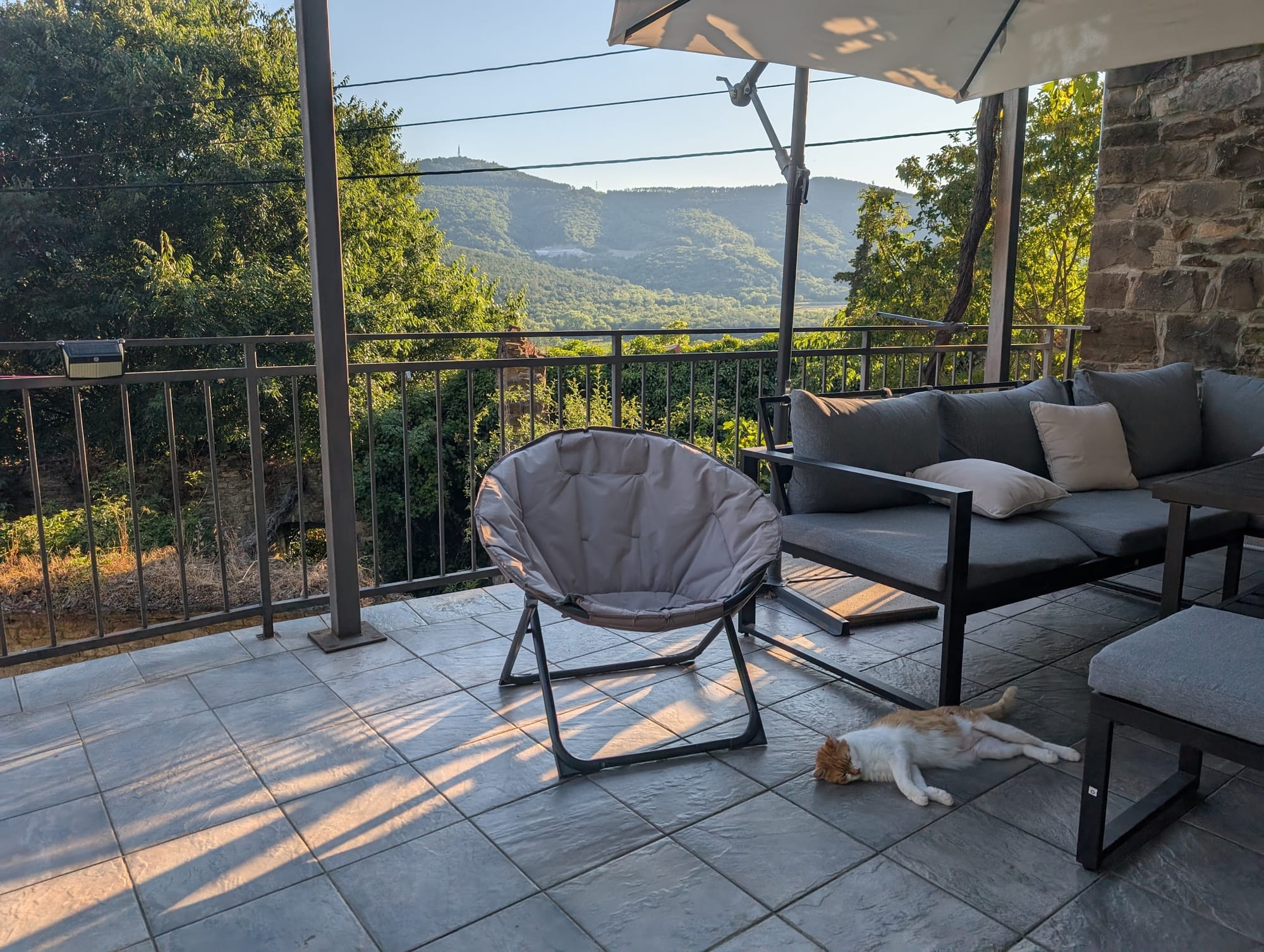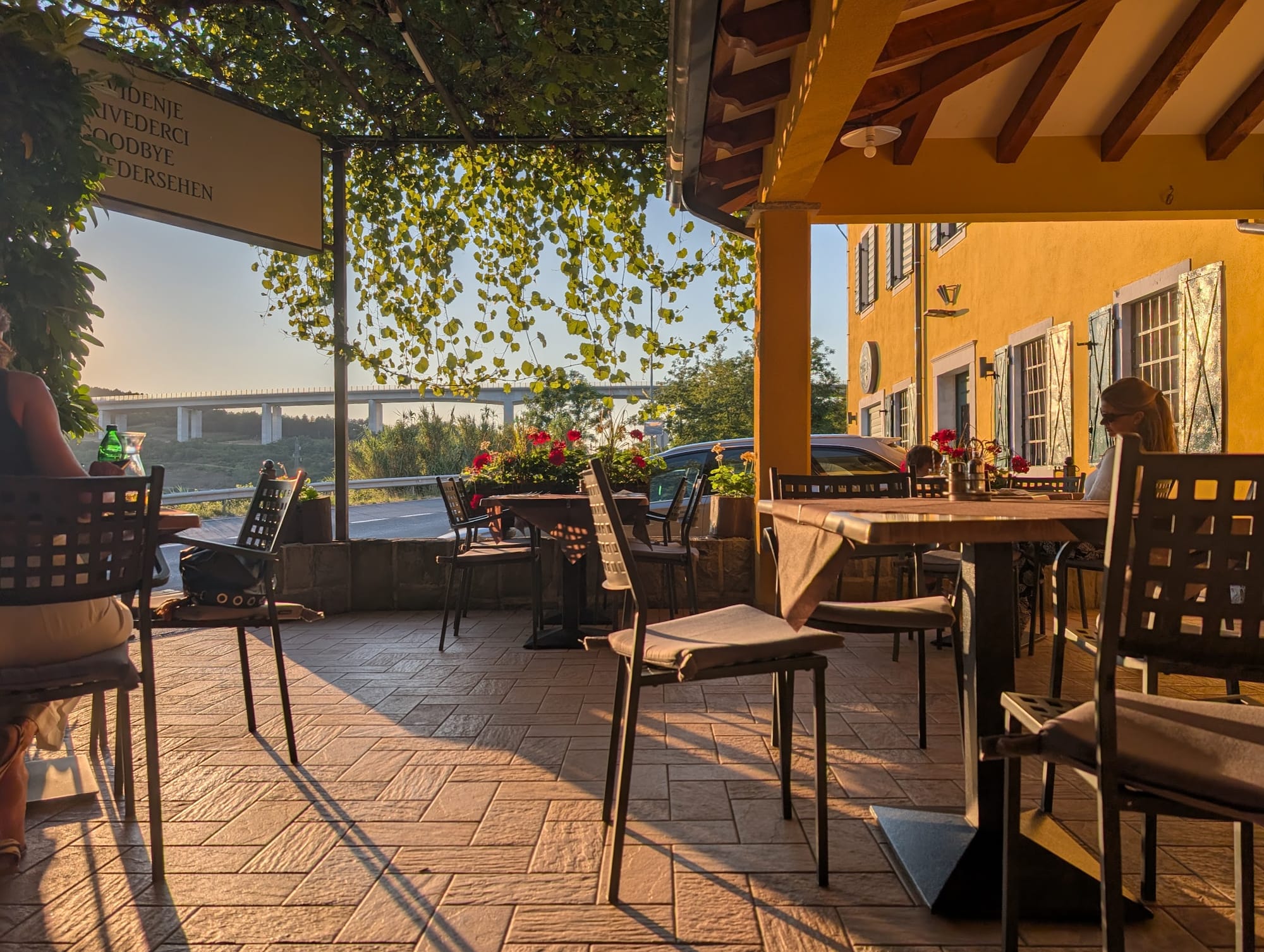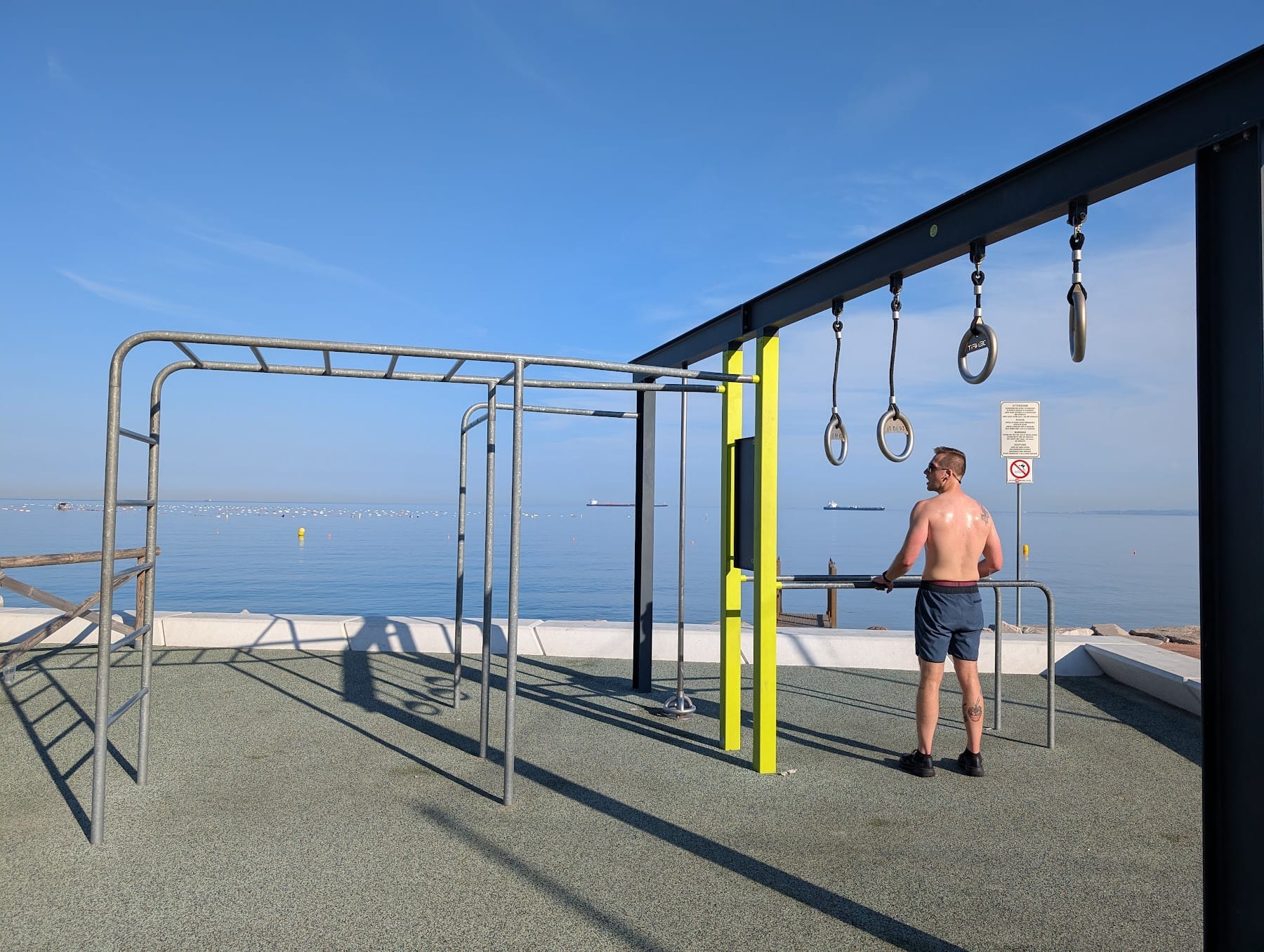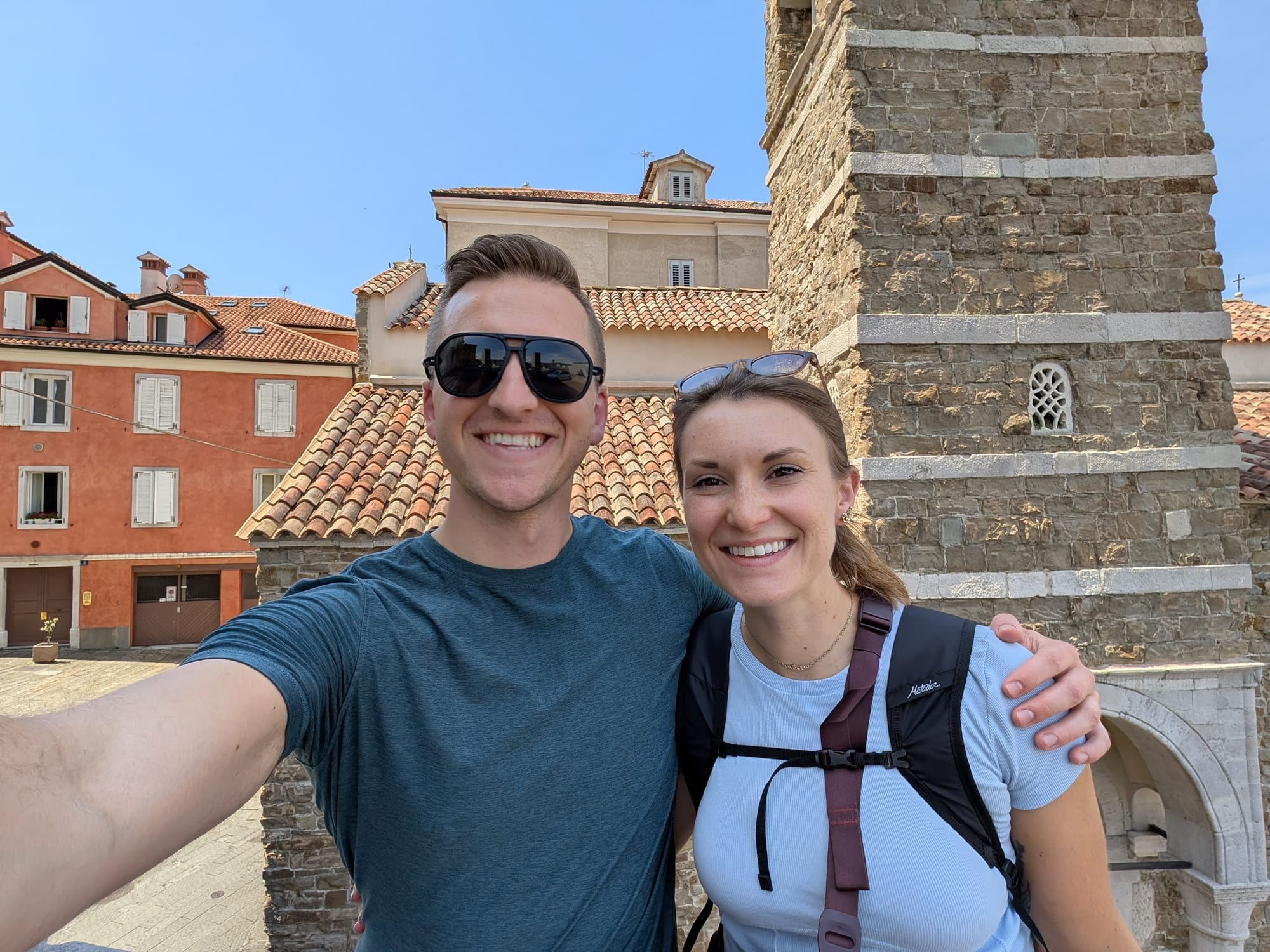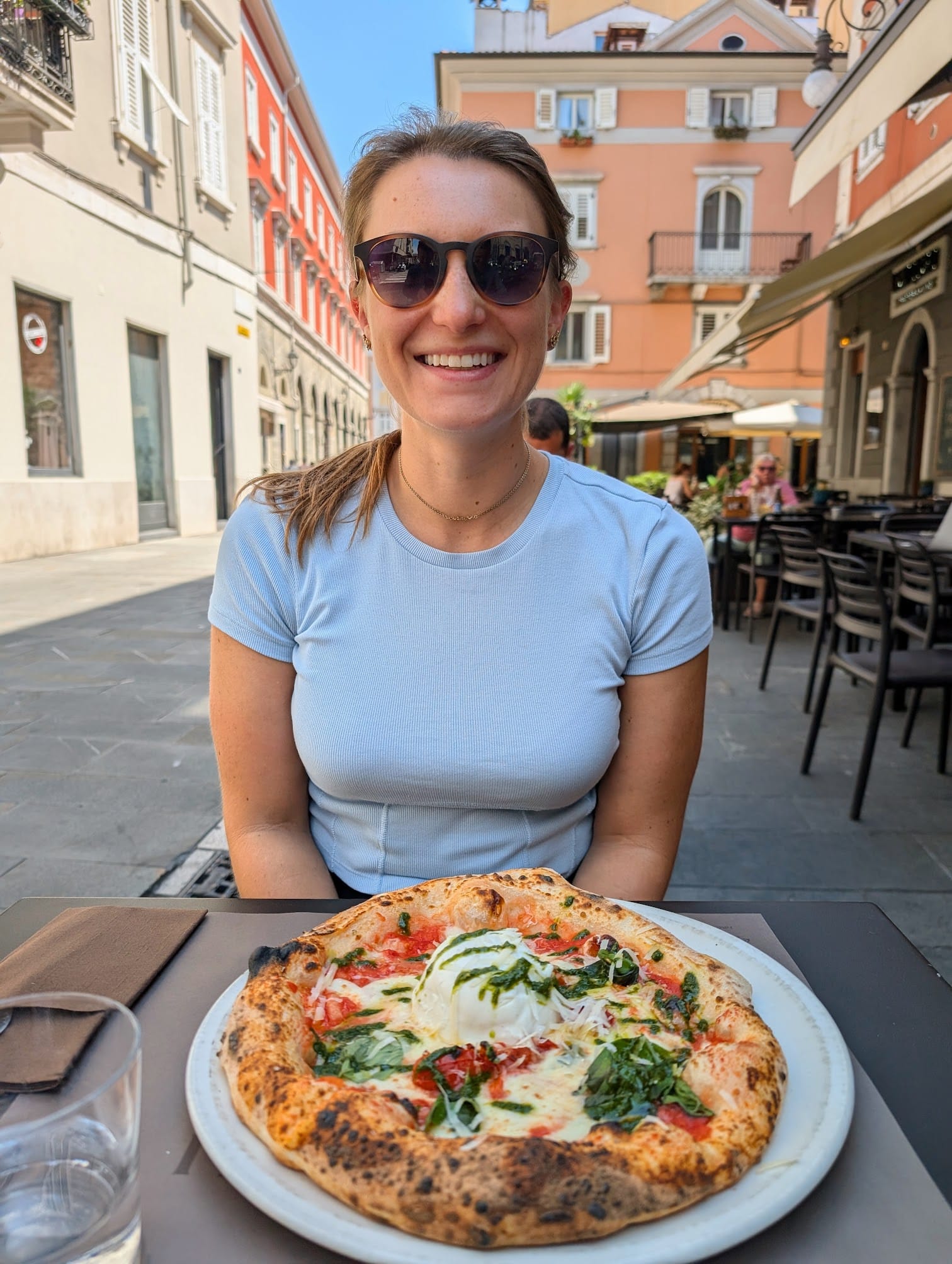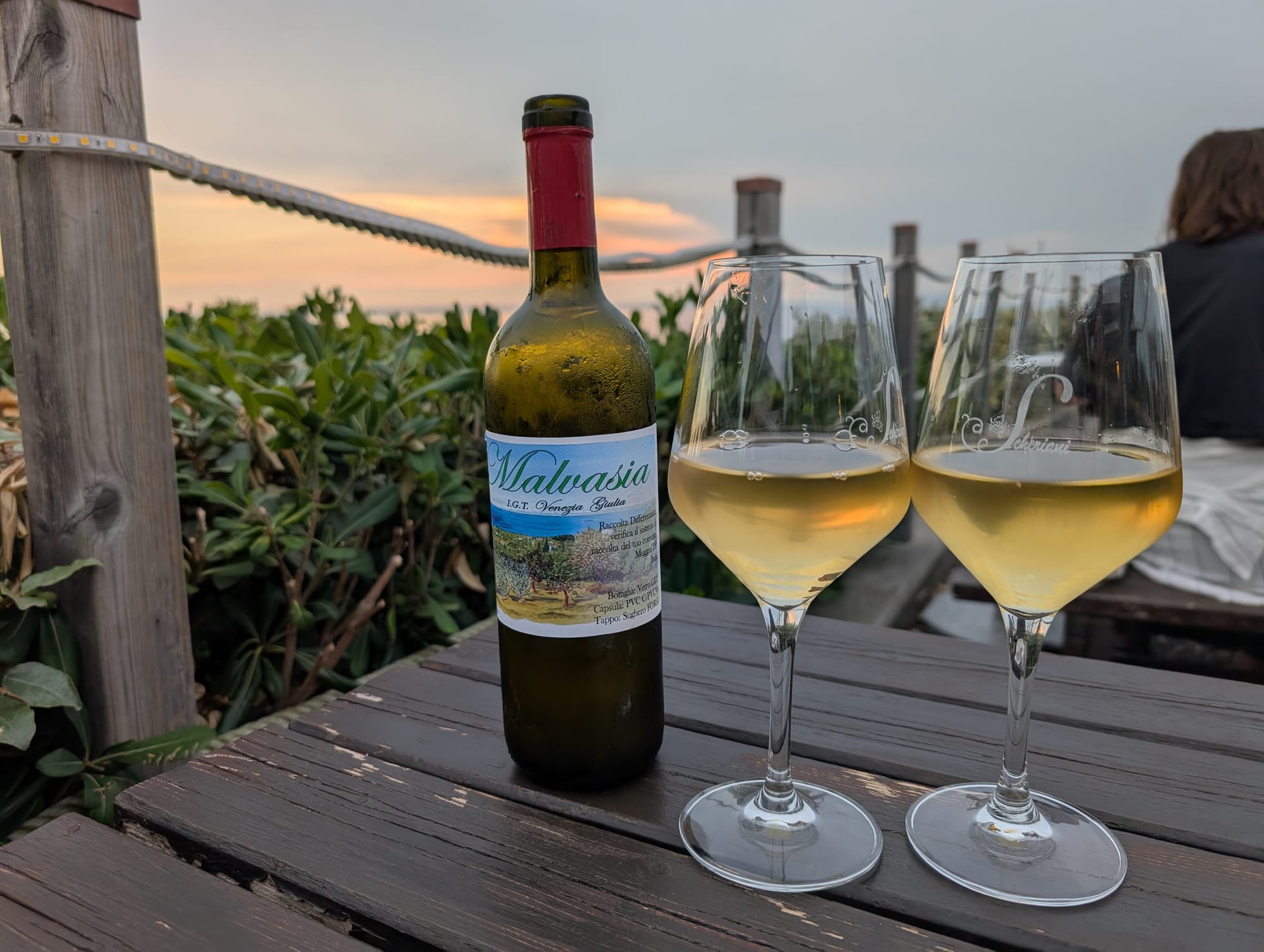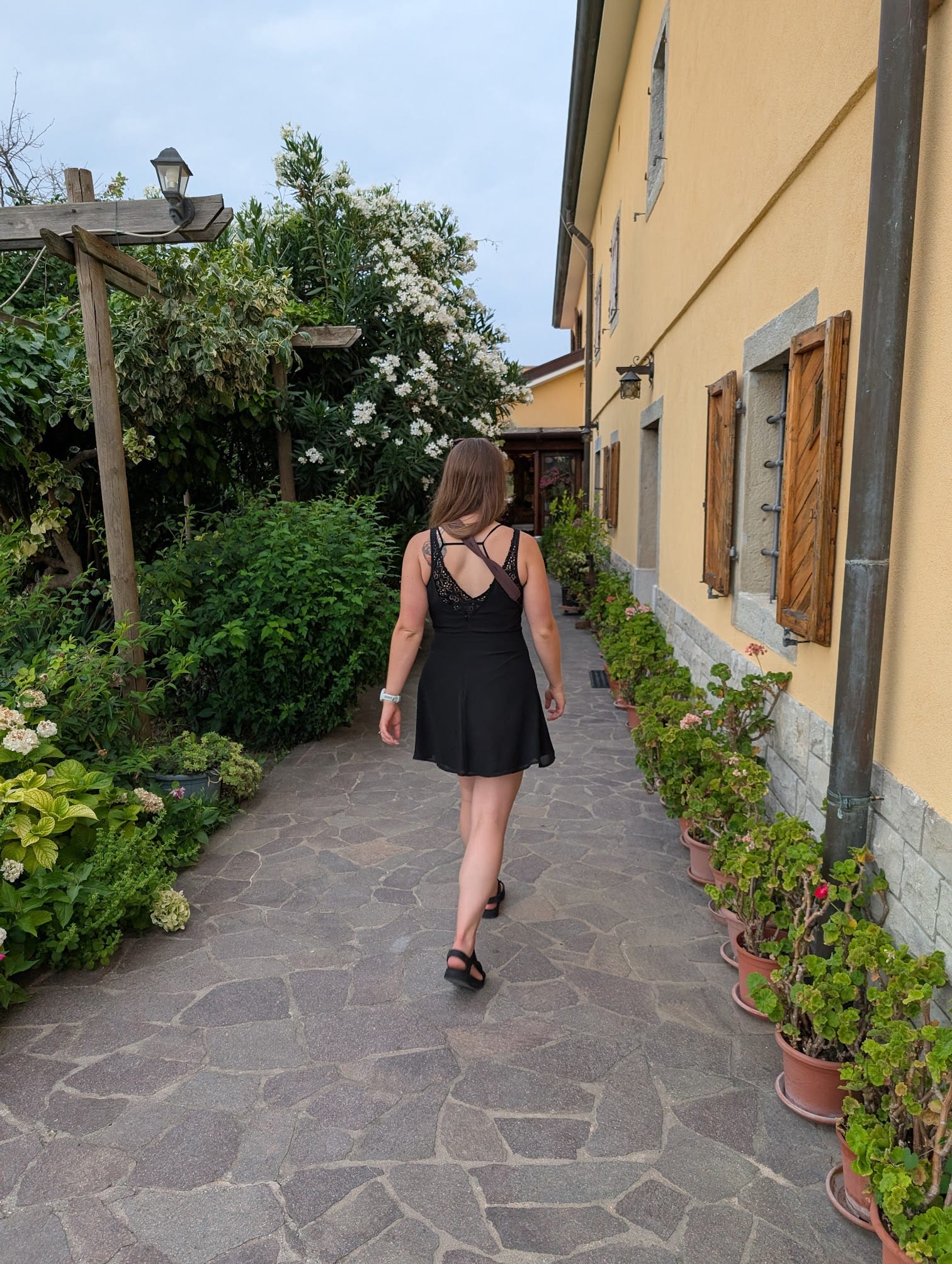Two Gorgeous Days in Osp 🇸🇮
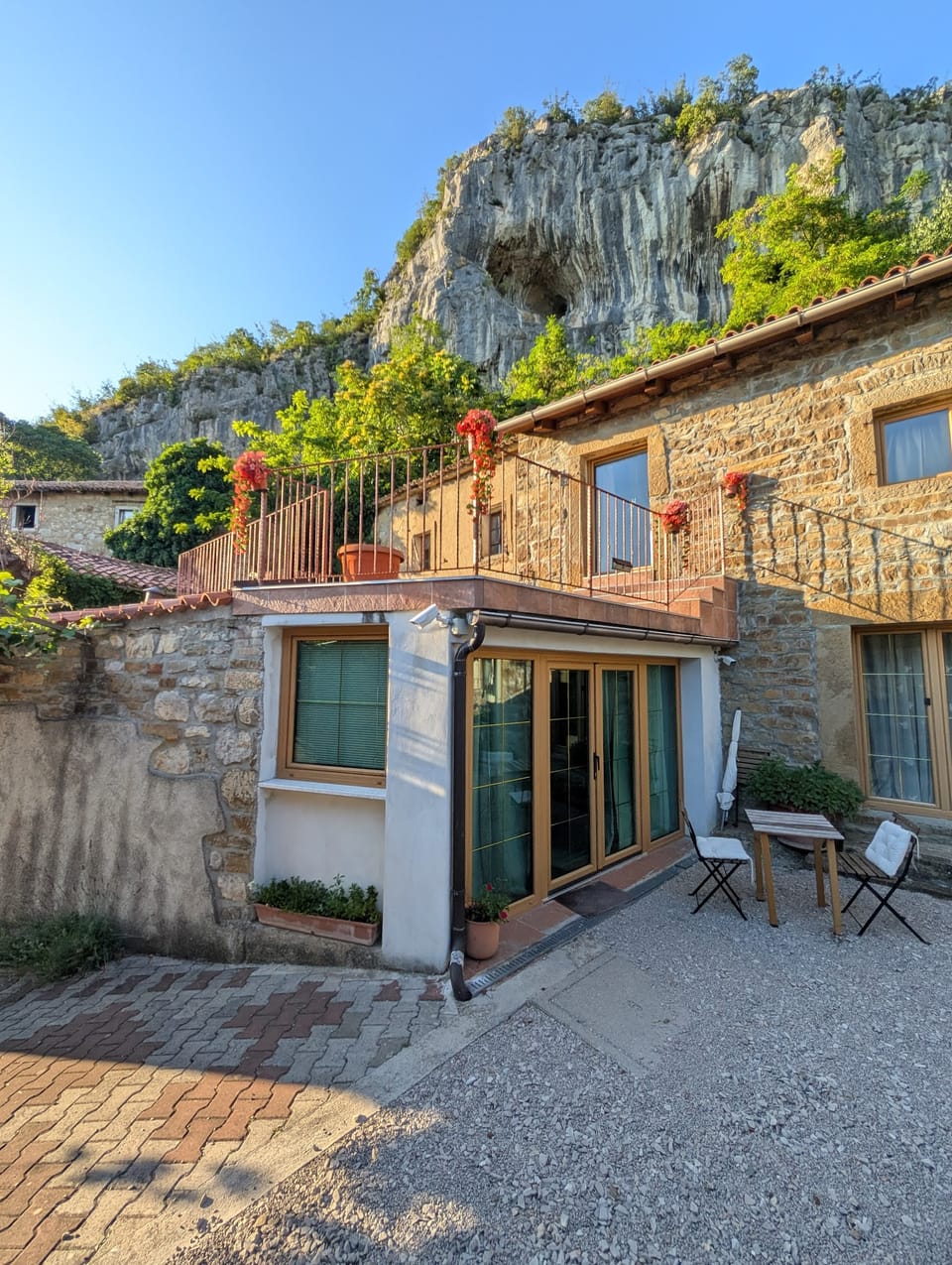
Our trip to Slovenia began in the tiny cliffside village of Osp with a population of less than 200. Nestled in the municipality of Koper, just 10 kilometers from the Adriatic Sea and steps from the Italian border, Osp is known for its centuries-old stone homes, a historic church, and a formidable limestone wall that draws extreme climbers from around the world.
It's quiet but for the occasional rooster, with steep, winding, narrow cobblestone roads and sweeping views of green pastures below. We stayed in a gorgeous stone home built in 1622, still owned by the same family, whose name is the first to appear on the official record of the local church. Our Airbnb hosts greeted us warmly with glasses of champagne sipped beneath a 60-year-old grapevine that winds through the property. Between drags of cigarettes, they spoke impeccable English and shared stories about their home’s history, from the beginning through the world wars to the breakup of Yugoslavia. In a few minutes, they'd given us a glimpse into Slovenia’s deep pride, resilience, and hard-won independence.
That morning, we’d landed in Zagreb, Croatia, rented a car, and wound our way along the coast of Croatia before crossing into Slovenia. The drive went by quickly thanks to the gorgeous views—light dancing on the Adriatic, fishing boats in port, and terracotta rooftops scattered across the lush green hills.
We only had two nights in Osp, so we made the most of them. Our first evening, we stayed in town for dinner at one of only a handful of local restaurants near Osp, a cozy Slovenian-Italian restaurant known for its seafood. It was casually some of the best nonna-style food we'd ever had. We ordered handmade ravioli and gnocchi with rock shrimp, paired with local wine. The waiter finished our meal with a complimentary shot of rakija, the local spirit, which we quickly learned was meant to be shot, not sipped.
The next morning, we fought off jet lag (or maybe a hangover) with a workout at an outdoor calisthenics park right on the Adriatic Sea. Public workout areas like this are common in Europe, and this one was full of locals. Somehow, running and doing push-ups feels a lot less like work when you’re watching the sun rise over the Mediterranean.
Afterward, we ventured to Trieste, Italy, a port city with a fascinating mix of Italian, Slovenian, and Austrian influences, not to mention world-class coffee. We began our day with espresso on a patio, just as we had imagined. It quickly became a sweltering summer day with no clouds or air conditioned cafes to dip into, so we stuck to the slivers of shade, wandering through narrow streets and stumbling on historical landmarks, including a first-century Roman arch casually jutting out of a modern-day brewery (what's more Italian than that?). For lunch, we ordered two light, perfect pizzas: one with buffalo mozzarella and basil, and the other with sausage and in-season squash.
That evening, after a cold shower and a nap, we found an unassuming local gem in another coastal town. We navigated the winding seaside mountain roads across the border into Muggia, Italy. As we walked through the garden terrace to a deck overlooking the sea, the staff seemed surprised we didn’t have a reservation. They were clearly not used to English-speaking walk-ins. Families filled the tables, kids played on a small plastic playground, and the sea glimmered with orange and pink hues as the sun began to set. We wondered if those kids knew how beautiful their home was. All around us, conversations flowed in Italian, Slovenian, and German. A huge shepherd lay under the table next to us, patiently waiting for a shred of prosciutto to fall between the cracks of the table. We marveled at the full spectrum of the sunset as we enjoyed a slow, multi-course dinner of local cured meats, pasta, and Istrian Malvasia. It was our first taste of a variety of wine we’d come to love.
It was the perfect, relaxed start to our trip: a couple of quiet days filled with history, border-hopping, and meals by the sea. The next morning, we’d rise early and trade the gentle sea breeze for chilly mountain water and air, following winding roads into the Soča Valley, where whitewater rapids and paragliding waited.
Osp, Trieste, and Muggia in Photos 📸
